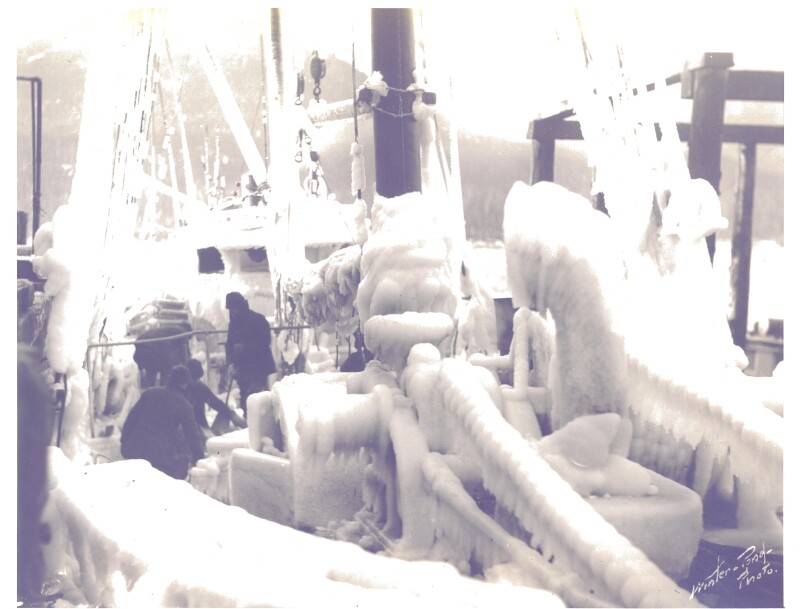Article three of a series written by Arni Thomson- History of the Fishing Vessel Owners Association (FVOA), Seattle, WA, Activities from 1914 – 2024.
Another important aspect of the steamer period was the attraction halibut fishing and boatbuilding had for Norwegian/American (and Norwegian/Canadian immigrants) that were settling in the Pacific Northwest at the turn of the century with their families.
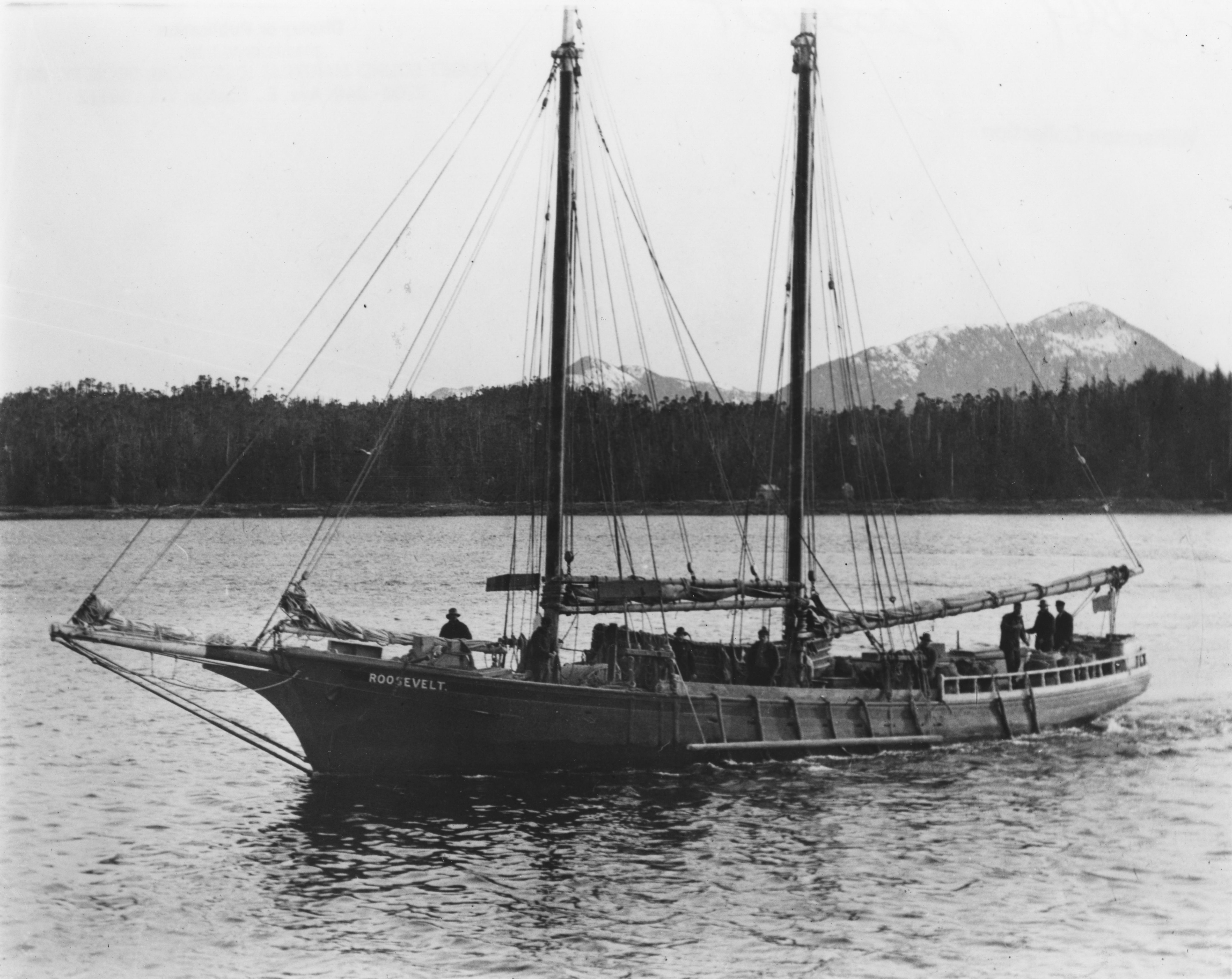
These rugged immigrants became the backbone of the skilled manpower and new fishing techniques needed for the successful operation of the offshore steamers.
This, in turn, led to the development of the halibut schooner boatbuilding industry and the simultaneous construction of the Fishermens Terminal, completed in January 1914, and the dredging of the freshwater Salmon Bay Waterway connecting to the Hiram Chittenden Locks that open out to Puget Sound and the Pacific Ocean. This new infrastructure connected Lake Washington and Lake Union to downtown Seattle, Fremont, and the (City) of Ballard, founded in 1890. Ballard became the first municipality established under the State of Washington and was admitted as the 42nd State of the Union in 1889. These developments led to the construction and moorage of the famous halibut schooners (several of which still operate in the offshore line fisheries of the Northeast Pacific Ocean today). The construction of salmon seine vessels for the Puget Sound and Alaska salmon fisheries also began in earnest at this time.
Lokken notes that the period from 1888 to 1930 in the North Pacific can be characterized as the golden age of the halibut schooner. He defined a halibut schooner as a fishing vessel with two masts and its pilot house located aft on its deck. This design had its origin in Norwegian fisheries and, to some extent, on the East Coast of the United States and was brought to the Pacific Northwest in the 1890s. It formed the basis of the halibut fishery in the first 40 years of its existence as an industry. During the first 42 years of the fishery, from 1888 to 1930, at least 150 halibut schooners were built in Puget Sound shipyards. Most of these yards were small and mobile, run by a master carpenter and a small crew. About 35 of the approximately 150 schooners built on Puget Sound prior to 1930, were sailing schooners launched before 1904.
Pacific Halibut Schooners and their Builders, Sea Chest, Seattle, March 1988
Several Norwegian boatbuilders were located in and adjacent to Ballard along the Salmon Bay Waterway. Lokken produced a list of them. They were all building schooners. Ingvald Heggem, John Strand, A.S. Nilson and Kelez, Sivert Sagstad, Edward E. Johnson---called “honest Johnson,” and the Swede; Andrew Berg, Markey and Wilson, Ole Berg, Campbell Brothers, Olson & Sunde, John Flem, all of Seattle; King and Winge of West Seattle and Matt Anderson of Vashon Island.
Grand Opening of the Seattle Fishermens Terminal January 10, 1914
By January of 1914, Seattle was already boasting of having one the largest fleets of motor fishing vessels in the world. A striking demonstration of this occurred on January 10th when close to four hundred purse-seiners, halibut schooners, trollers and gillnetters assembled off Salmon Bay in parade formation to celebrate the opening of the municipal dock provided by the City and Port of Seattle for the benefit of the fishermen.
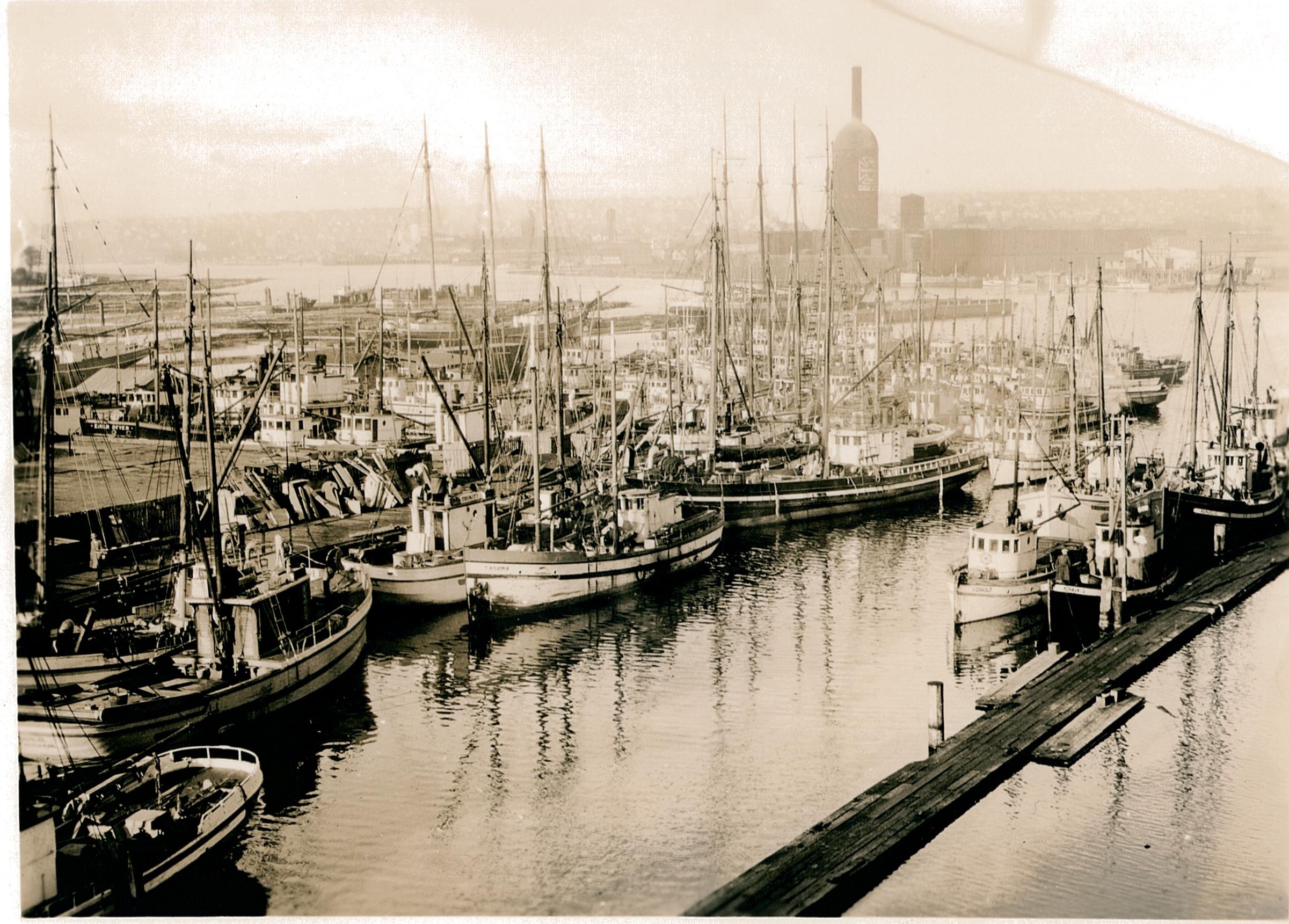
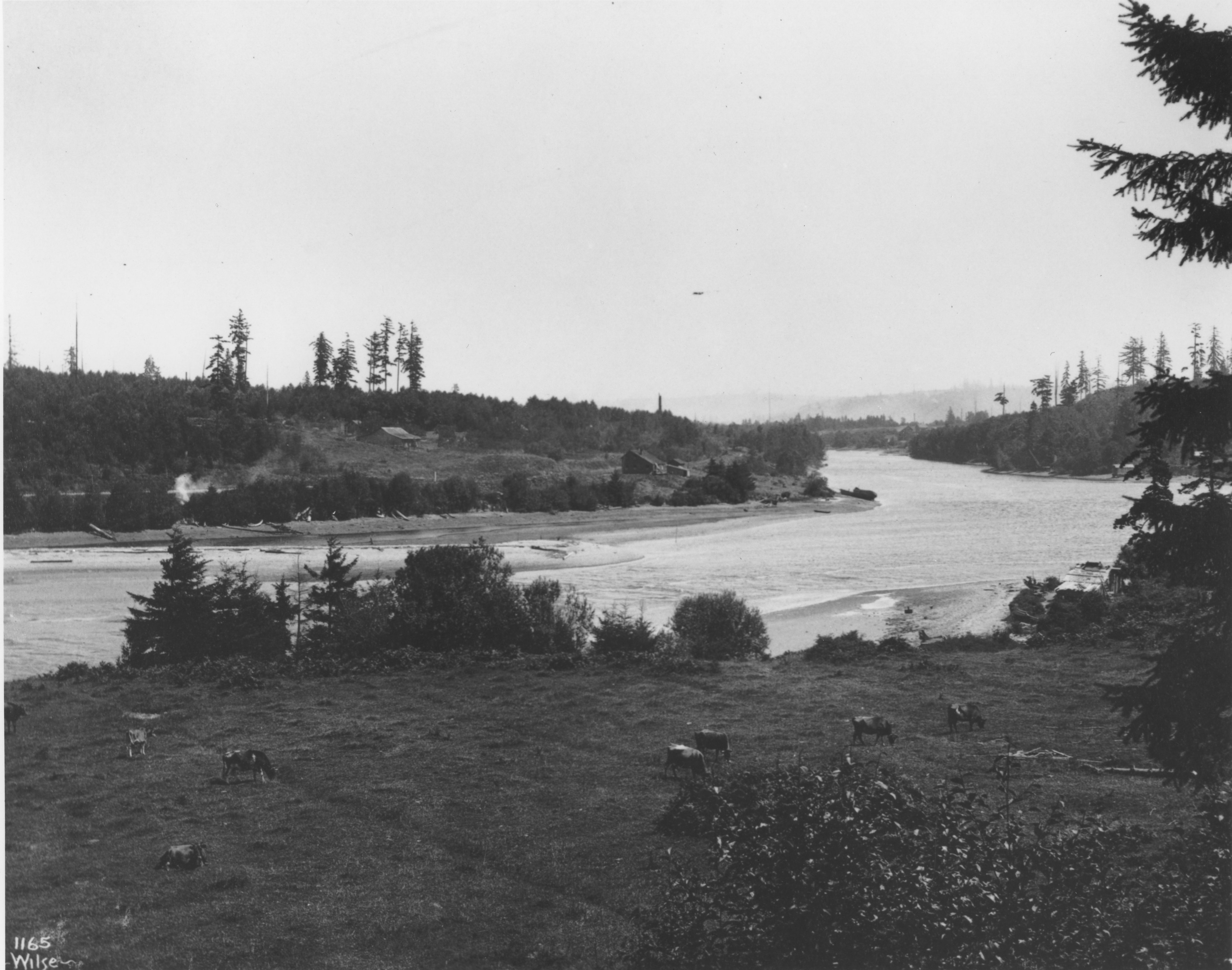
Expansion included the construction of gear storage buildings and two slips each 1,000 feet long, which provided moorage for a large number of vessels. The formal opening of the new terminals became the occasion of a striking marine pageant and celebration. The celebration opened with a parade of almost 400 boats, including every description of fishing craft. The combined fleets of approximately 400 represented an estimated investment of $2 million dollars and an earning capacity placing the industry second among those in the state. At the stern of each flew Old Glory, but smaller flags were placed at the mastheads representing immigrant homelands of Austria, France, Germany, Greece, Italy, Norway, Denmark, and Sweden.
Seattle Mayor Cotterill noted: “The completion of this project illustrates that the fishing resource has grown to such an extent in the past ten years that now I understand, the Northwest equals the output of the famous Massachusetts banks.”
In a forceful address, Ole Hanson, a well-known member of Teddy Roosevelt’s Bullmoose Party and destined to be Mayor of Seattle in 1918-1919, had this to say:
“We landsmen who gather here can never fully understand just what this dock means to the fishermen. To us it is more or less a sentimental proposition, to them it means a better and a large opportunity to share in this product of their toil. Being descended from a country whose main industry since history began has had to do with the sea, and whose livelihood for centuries rested on its ability to harvest the ocean, I sincerely rejoice at every effort that is made to make the fisherman’s life, hard at its best, a little easier, a little happier ans a little more profitable to the men who toil in storm and calm, in the summer’s heat and the winter’s cold, to glean food for the multitude from the ocean’s waves.”
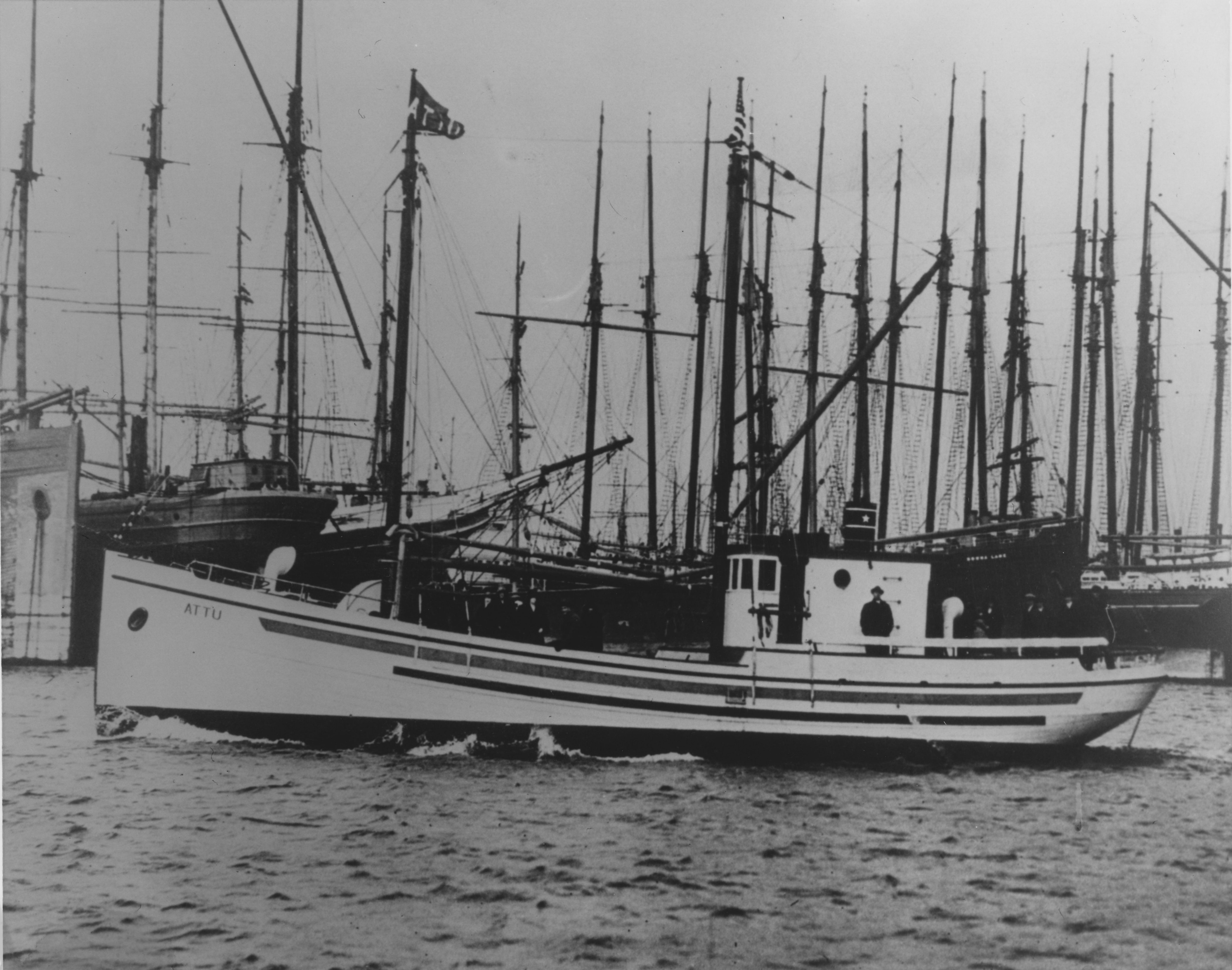
Longline Matt Madsen
At least one halibut doryman, a future example of quiet Norwegian American leadership, was unable to make the festivities. Like hundreds of other halibut fishermen, he was hauling gear in Hecate Strait or Southeast Alaska. This was Matthias “Longline Matt” Madsen. Madsen was born in Bjorneren Norway in 1890 and became a line fisherman at the age of 15. He also engaged in the winter Icelandic herring fishery. In 1909 he went sealing in the Arctic and collected bears off Jan Mayen for zoos in Europe.
In 1911, Madsen and two friends landed at Ellis Island, New York. He gravitated to North Dakota, where he worked on a farm for two summers and in the woods of Minnesota in the winters. He made his way to Seattle in 1913 where he had many jobs, including making rail ties for the Great Nortern and worked for $2.00 per 10 hour day on the locks of the Lake Washington Ship Canal. Madsen got his first “chance” halibut fishing aboard the Weiding Brothers, a 10-dory steamer, under Captain Holstrom, 20 dorymen, and several other crewmen. The steamer hit a log with a full load aboard and and started going down fast. They cut the dories loose, threw in a few skates of gear and bottles of water and abandoned the steamer. He and the dorymen rowed their way down Hecate Strait in stormy seas for two days.
Luckily, they were picked up by the passenger steamer Saint John en route to Prince Rupert. Madsen returned to Seattle and hired aboard the newly launched 12-dory halibut steamer Chicago in Seattle with Captain Johannsen, making four trips in the winter of 1913-1914. He went on to own his own boats, first a five-man 15-ton halibut vessel, the Eidsvold, in 1919, then the schooner Eagle in 1923, and the Ilene in 1927, and he retired in 1963. He was, at one time, President of the FVOA, and in 1955, was appointed by President Dwight D. Eisenhower to be the first American halibut vessel owner appointed as a Commissioner of the IPHC, and he served until 1964. Madsen was a staunch conservationist and viewed the commission as the instrument for preserving and maintaining the resource for future generations.
The Early Activities of the Fishing Vessel Owners Association
The emergence of the halibut schooners and independent boat owners, other types of combination vessels and the industrialization of the Pacific halibut fishery as it is known today began in earnest in the first decade of the 20th century and led to the formation of the first halibut organizations, the Deep Sea Fishermens Union of the Pacific on November 1, 1912, followed by the formation of the Pacific Coast Fishermens Association on May 27, 1913. A strike occurred, focused on three steamers over the issues of depressed prices (one cent a pound to the fishermen), bad weather, and a collapsed resource. The strike against the company steamers was effective, and they agreed to pay 1.25 cents per pound on March 31, 1913, and most importantly, agreed to recognize the Union. In very little time, the Union membership jumped to 750 men. Flexing their muscle, the Union struck again in the winter of 1913 and the larger steamer companies like New England settled at 1.25 cents per pound and agreed to recognize the Union.
The Union struck again on May 26, 1913, this time they focused their efforts on the schooners in an attempt to reduce the vessel share of the gross profit from 25 to 20 per cent. Thirteen schooners were tied up and 130 men sat on the beach. Upset at the costly turn of events, the boat owners began holding meetings in the fall of 1913 and on December 15th, announced the formation of the Pacific Coast Fishermens Association. The first official meeting of the Association took place on January 3, 1914. On December 30th, 1914, the name of the organization was changed to Fishing Vessel Owners Association to more clearly define the role of its members in the developing fishing industry.
The change in names officially took place on July 3, 1915, when the meeting convened under the old name and ended with the new one. The FVOA was organized as a corporation with each member subscribing to stock although the stock was never issued. Charter members consisted of 54 halibut vessel owners operating out of Puget Sound. The association’s office quarters were located at Pier 8 in Seattle, later renumbered Pier 59.
Provisions of the Articles of Incorporation for the FVOA were far-reaching, were well chosen and their fulfillment and continued focus throughout the existence of the association account for much of its success. The objectives and purposes were adopted by the members at a meeting on January 5th, 1915. They are listed here:
- To promote the interests, encourage the co-operation and facilitate the organization of the owners of fishing vessels on the Pacific Coast for their mutual benefit and profit and to that end: establish and maintain headquarters for the transaction of business and where members can gather to disseminate information relative to commercial fishing
- To promote the perfect charting of the waters of Puget Sound and Alaska, establish light houses, lifesaving stations and other improvements for the greater safety in navigation.
- To promote efficiency in the construction and equipment of fishing vessels; to promote standards of efficiency (and safety) for fishing vessels, as prescribed by the association.
- To investigate causes of disaster with a view to preventing the reoccurrence; to promote legislation in the interest of the association; to collect data looking to the discovery and location of fishing grounds; to develop new markets and to do every other act which may lawfully be done of mutual benefit to the members of the association.
- To prescribe rules and regulations under which the members may organize for their mutual advantage and to carry out the objects above stated; to limit the membership of the association to owners of fishing vessels and to require such obligation.
- To establish a Fish Exchange, depot or salesroom for the sale of fish at wholesale or in cargo lots and to that end: to establish and maintain headquarters to be known as a fish exchange for the convenience and profitability of the members. To prescribe the qualifications of members of said fish exchange and to impose rules and regulations on members of said fish exchange.
- To engage in the fish brokerage business; to buy, sell and export fish at wholesale.
- To acquire by purchase lease or otherwise and to construct, maintain and operate, refrigerator plants, salting and other plants, store rooms, warehouses, sales rooms and other facilities for the convenient handling and dealing in fish.
- To engage in the fishing business and in that connection, to own, operate, charter and equip fishing vessels of every kind.
- To engage in the general merchandising business and to own and operate stores and warehouses, depots for the convenient and profitable conduct of a general merchandising business.
- To own, hold, use, enjoy, buy, sell, lease or otherwise handle and deal in real and personal property.
- To borrow or lend money; to deal in notes, mortgages or other evidence of debt; to borrow money on the credit of the association.
- To own, hold and buy, sell or otherwise deal in the stock of other corporations.
- To do whatever is necessary to be done to carry out all the listed purposes herein as well as to do each and every thing permitted to be done by the laws of the State of Washington.
- The capital stock of the corporation shall be $500.00 devided into five hundred shares of the the par value of $1.00 per share.
According to FVOA Manager, Harold Lokken in an historic memo he drafted in July of 1993, other purposes of organizing were apparent. One was the need to have a group voice in dealing with crews of vessels who had set up the Deep Sea Fishermens Union of the Pacific in 1912 and another was the necessity of owners and crews in the halibut fleet to have a unified voice in dealing with the buyers of halibut produced by the Seattle fleet.
In 1915, day by day issues of the newly formed FVOA, included disagreements with the Union over shares and working conditions culminating in the strike of the fleet in 1916; and discussions with fish buyers over grading of fish and with herring fishermen and dealers related to the availability of supplies of bait. In the political field, much time was spent opposing attempts to legislate closure of Prince Rupert, B.C. as a port where American vessels could market their catches of halibut. Proponents of the closure assumed that increased landings in Alaska would result from the Canadian closure. During 1914 and later, the FVOA spent considerable time protecting the right to ship halibut from Alaska by steamer to take advantage of higher prices paid in the Seattle market.
In the early years of the association, the office was run by members who were active fishing vessel owners and one paid person for a salary of $100-$125 per month. The representative was termed a business agent until Harold’s brother, John Lokken was hired in 1919 as a bookkeeper and he remained with the FVOA until December 1923 when he left to assume another position. Harold Lokken’s long connection with the FVOA began on March 13, 1924.




